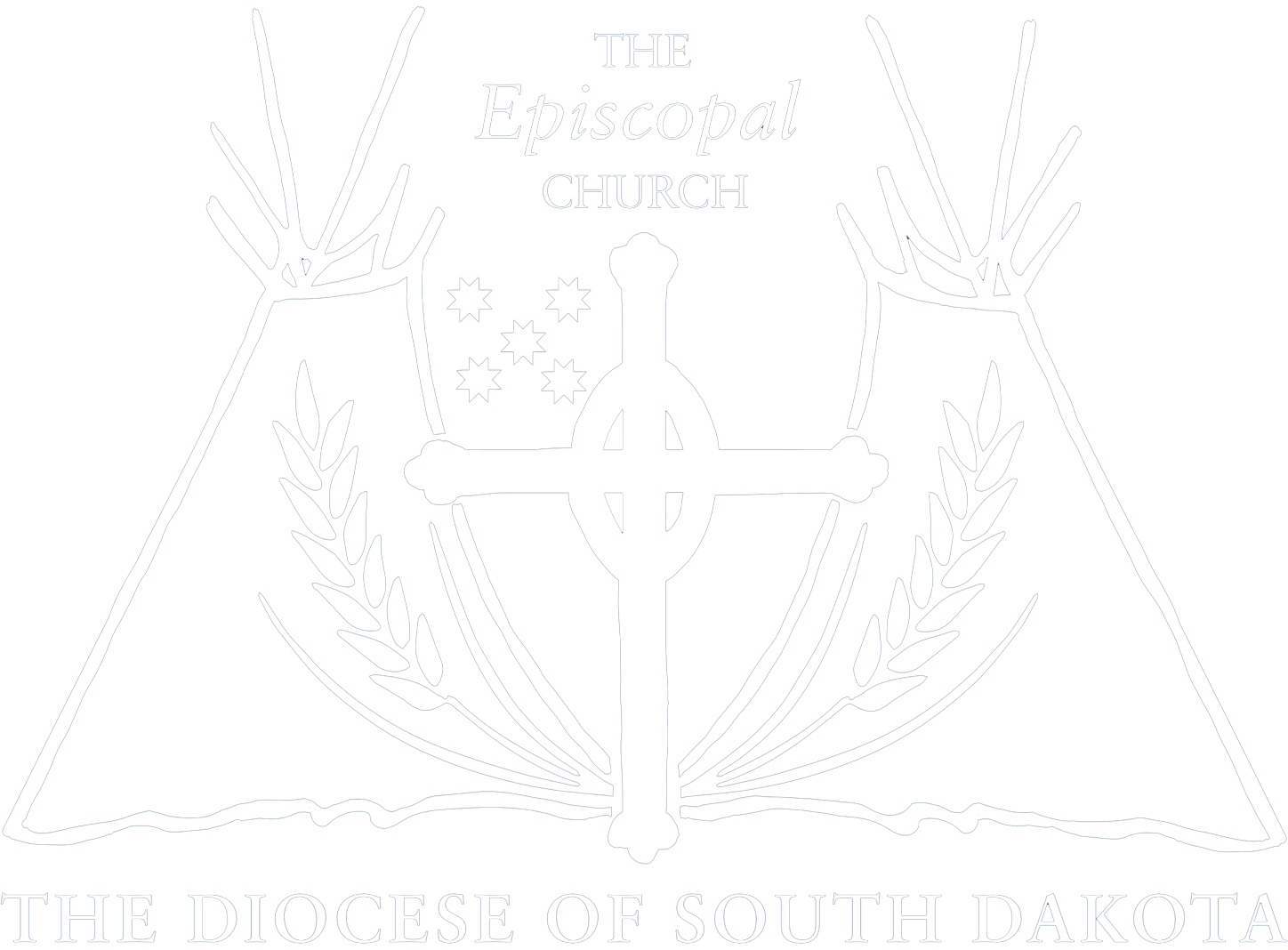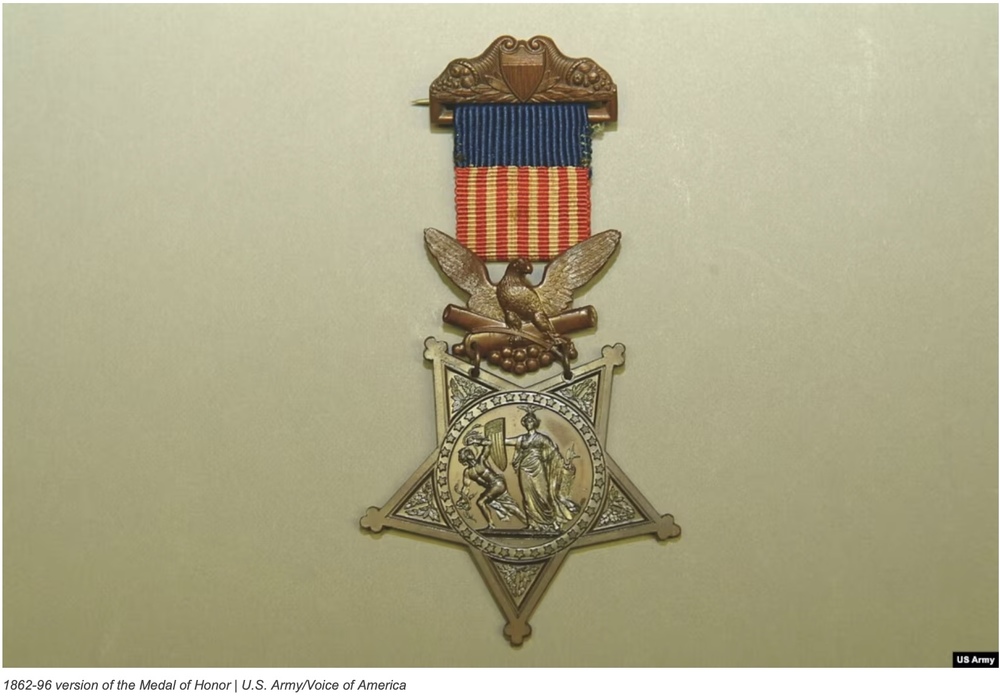Photo above: 1862-96 version of the Medal of Honor | U.S. Army/Voice of America
By Caleb Maglaya Galaraga, The Living Church
Leaders from the Diocese of South Dakota, including a descendant of a Lakota who survived the Wounded Knee Massacre of 1890, remain steadfast in their decades-long advocacy to have the Medal of Honor, the nation’s highest military award, stripped from U.S. soldiers who participated in the indiscriminate killing of Native Americans’ ancestors.
This comes despite a September 26 announcement from Secretary Pete Hegseth of the U.S. Department of War (formerly the Department of Defense), declaring that the soldiers could keep their medals and “that their place in their nation’s history is no longer up for debate.”
In July 2024, Hegseth’s predecessor, Secretary Lloyd J. Austin, convened a five-member special panel to consider whether medals should be stripped from 20 soldiers involved in the massacre. Over 900 Medals of Honor have been rescinded by Congress since 1916, and in 1990 Congress apologized to the descendants of those killed at Wounded Knee.
Hegseth said the panel had recommended last October that the soldiers be allowed to keep their medals, but Austin had failed to make a decision, which Hegseth described as “careless inaction.”
A resolution submitted during the recently concluded convention of the Diocese of South Dakota by the Very Rev. Ward Simpson, dean of Calvary Cathedral in Sioux Falls, and Robin Bowen, a military veteran, lay leader, and member of the Sisseton-Wahpeton Dakota Tribe, reaffirmed the persistent stance of Native Americans seeking to rescind the military award—a recognition for “conspicuous gallantry”—bestowed upon the soldiers a year after the massacre.
“Episcopal theology of the Incarnation holds that God’s entry into human history dignifies all humanity,” part of the resolution says. “To honor actions of massacre is to directly contradict this fundamental belief.”

According to the Rev. Canon Dr. Lauren Stanley, the diocese’s canon to the ordinary and secretary to the convention, the resolution passed unanimously. Further edits will be made to refine the language with input from Episcopal leaders from the Lakota Nation, including the Rev. Twilla Two Bulls, who stewards one of the nine Episcopal parishes inside the Pine Ridge Reservation, St. John’s Church in Oglala, South Dakota.
St. John’s was originally located in a small town 16 minutes away that bears the name of the reservation. It served as a makeshift hospital after the massacre at Wounded Knee.
Two Bulls, who became a deacon in 2017, said the work to rescind the medals has been active for two decades. “Oh, I was mad,” Two Bulls told The Living Church about when she learned of Hegseth’s decision, but added that the frustration “is nothing new to us.”
She said activists will continue to bring up the issue with future presidential administrations.
Stanley said part of her job is to mail a copy of the completed resolution to President Trump and Secretary Hegseth. She also said the diocese will forward the resolution to the General Convention Office, with the hope that the entire church takes it up in 2027.
Blood in the Floorboards
A military surgeon appointed by Abraham Lincoln, who rose through the ranks in part because of his service to maimed Civil War soldiers, grew pale at what he saw inside the Episcopal church at the Pine Ridge Indian Agency in South Dakota in the early hours of December 30, 1890.
“This is the first time I’ve seen a lot of women and children shot to pieces,” Major Albert Hartsuff told journalist Thomas Tibbles of the Omaha World-Herald. “I can’t stand it.”
A day earlier, several hundred—historical reports vary from 150 to more than 300—Lakota men, women, and children were gunned down by U.S. Army troops after a raid against the tribe took a deadly turn. When a gunshot—believed by some to have been accidental—rang out while a soldier was attempting to wrestle a weapon from a Lakota man, “American soldiers launched a hailstorm of bullets from rifles, revolvers, and the rapid-fire Hotchkiss guns that tore through the Lakota,” Christopher Klein writes for the History Channel.
The massacre was the apex of long tensions between the United States and Native American leaders, preceded by decades of conflicts, failed treaties, and resistance from Indigenous nations that had suffered from surrendering millions of acres of land to expanding white settlements.

Among those who died on December 29, 1890, was Chief Spotted Elk, also known as Chief Big Foot, a Lakota leader who fled with his followers for refuge after his half-brother, Chief Sitting Bull, was killed.
Two Bulls is related to Chief Big Foot through her late father, the Rev. Robert Two Bulls, who was also an Episcopal priest.
Dee Brown wrote in Bury My Heart at Wounded Knee that wagonloads of four men and 47 women and children were taken to Pine Ridge, 16 miles away from Wounded Knee Creek, where the Episcopal mission was opened.
Benches were removed, and hay was scattered on the floor as bloodied bodies were laid down. Two Bulls said around 10 people died in the church, and the floorboards were soaked in so much blood that to this day the stains are still visible.
Tibbles, who died in 1928 and was inside the church that day, wrote: “Nothing I have seen in my whole … life ever affected or depressed or haunted me like the scenes I saw that night in that church. One un-wounded old woman … held a baby on her lap … I handed a cup of water to the old woman, telling her to give it to the child, who grabbed it as if parched with thirst. As she swallowed it hurriedly, I saw it gush right out again, a bloodstained stream, through a hole in her neck.”
Bowen explained how the artillery used against the unarmed Lakotas worked: “Hotchkiss guns are just meant to explode like little grenades.”
‘Do They Get Tired of Hearing Native Problems?’
Simpson wrote the copy for the resolution and, together with Bowen, refined the text. The cathedral dean said he felt the statement needed both a biblical and theological basis. At the beginning of the resolution, the actions of the U.S. soldiers are described as an “unconscionable killing” and named all three tribes that make up the Great Sioux Nation—Lakota, Dakota, and Nakota.
Bowen, who spoke about the resolution during the diocesan convention held on October 3 and 4, initially wondered how the convention might react. “I wonder, so many Native problems come up—do they get tired of hearing our Native problems?”
But she said she has always been treated well after speaking up, and, getting a bit emotional, added that after sharing the resolution, she felt the love of her Christian brothers and sisters.
“It was overwhelming, what I received,” Bowen said, adding that the message is not just for those in the diocese but for people watching—those learning about the challenges Native Americans continue to face.
“You could have heard a pin drop in the room” when the resolution was taken up, Stanley said.
Although both Two Bulls and Bowen, who have known each other for decades, expressed frustration and disappointment with Hegseth’s decision, neither is willing to let up on the issue—a sentiment shared widely among the Sioux Nation’s citizens.
“Hegseth’s own decision may be final, but the Wounded Knee medals debate is not over,” said a commentary published on the news outlet South Dakota Searchlight by Craig Howe, founder and director of the Center for American Indian Research and Native Studies. “Public debate on this issue is entirely beyond the control of Hegseth or any future Defense secretary. People will continue to uncover new evidence and propose different interpretations.”
Bowen said going through the United States Congress is another avenue to change the decision. Senator Elizabeth Warren of Massachusetts introduced a bill last May to rescind the medals, and vowed after the announcement to continue to push for “legislation to revoke these medals permanently and pursue justice for the Lakota people.”
The Secretary of War’s public affairs office told TLC that it has no comment beyond Hegseth’s announcement.

